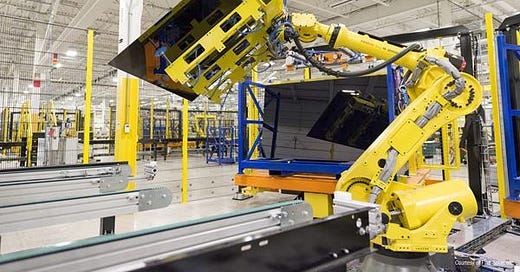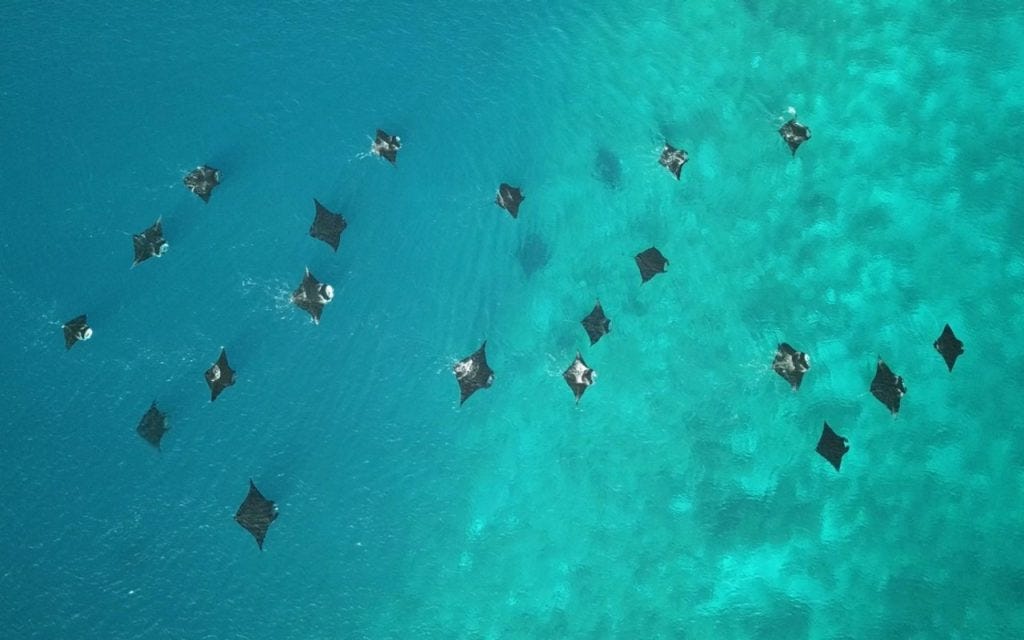The Weekly Anthropocene, November 23 2022
A Dispatch from the Wild, Weird World of Humanity and its Biosphere
United States of America
First Solar, America’s largest solar panel manufacturing company has announced that it will be building its fourth American solar panel factory. First Solar, which already has three factories in Ohio (one of which is pictured), recently announced that it will invest $1 billion in building a new solar panel factory in northern Alabama that will produce 3.5 gigawatts (3,500 megawatts) of solar panel modules every year from 2025 onwards, as well as creating 700 new jobs. Yet another new green manufacturing project directly catalyzed by the great Inflation Reduction Act!
“The passage of the Inflation Reduction Act of 2022 has firmly placed America on the path to a sustainable energy future,” Mark Widmar, CEO of First Solar.
Construction has begun on the Three Corners Solar project in Kennebec County, Maine, set to provide enough electricity for 30,000 homes with its 152 megawatts (MW) of electricity generation capacity. It should be completed by early 2024, and will be the largest solar project in Maine! Notably, this project will use American-made solar panels from First Solar. To minimize its environmental impact, the company behind it has paid for the conservation of 1,875 acres of land elsewhere in Maine and been careful to avoid disturbing the key amphibian habitat of vernal pools. And this is just one of many grid-scale solar projects forging ahead across the nation: construction also began recently on the 200-MW Appaloosa Solar 1 project in Iron County, Utah, the largest solar farm in Utah to date. Great news!
Electric vehicles are being adopted by Americans faster than expected: in the first nine months of 2022, there were more than 530,000 new battery electric vehicle registrations, 57% higher than in the first nine months of 2021. Notably, registrations of non-Tesla EVs increased by 71%, as other automakers introduced more EV models to complete with Tesla. A Bloomberg report calculates that by the end of 2022, America will have 3.6 million EVs and hybrids and the road, and it’s set to rise much further thanks to Inflation Reduction Act tax credits!
Onshore wind power alone is on track to provide over 10% of all of America’s electricity in 2022, up from just 0.8% in 2007. And that number will only go up as gigawatts more of new wind power projects are underway! (Pictured above: the 998 MW Traverse Energy Wind Center in Oklahoma, which came online in 2022!).
Rooftop solar is also booming across the USA: a record 5.3 gigawatts (5,300 MW) of new rooftop solar is set to be installed in 2022. For context, that’s a 40% increase since 2021, and means that about as much new rooftop solar will be installed in 2022 as the entire nation’s capacity in 2015. Over 180,000 homes added rooftop solar panels in the second quarter of 2022 alone. And rooftop solar in America will rise much further in the next few years, as the Inflation Reduction Act provides a federal tax credit of $6,000 for homeowners who want to install it!
And finally, to swerve from the clean energy theme a bit, the FDA gave its first-ever approval to a cultivated meat product, made from growing animal cells in bioreactors without needing to kill the animal in the process. Upside Foods’ cultivated chicken (pictured) is now legal to sell in the United States, and Michelin-starred chefs are already seeking it out for their restaurants! It’ll likely be a few years before they can scale up production enough to sell in grocery stores, but this is still a historic milestone!
Indonesia
Reef manta rays are a species of manta ray slightly smaller than the giant oceanic manta ray (but still with a five-meter wingspan!). They are a species at risk, ranked as Vulnerable by the IUCN. Their population is declining in many locations due to overfishing, which has a particularly damaging impact given their slow breeding rate. However, a new study has found some good news for the species: their population is increasing in the marine protected areas of Indonesia’s lush Raja Ampat archipelago. A group of researchers recently used photographs of individually identified reef manta rays to calculate their population growth, and observed substantial increases, including more and more large feeding aggregations (pictured, above). In Dampier Strait MPA, the estimated population size increased from 226 rays in 2009 to 317 in 2019, while South East Misool MPA saw an estimated increase from 210 to 511 individuals. Since the study ended, hundreds more manta rays have been informally observed; Raja Ampat is an increasingly rich oasis for these social, intelligent fish! Great news.







